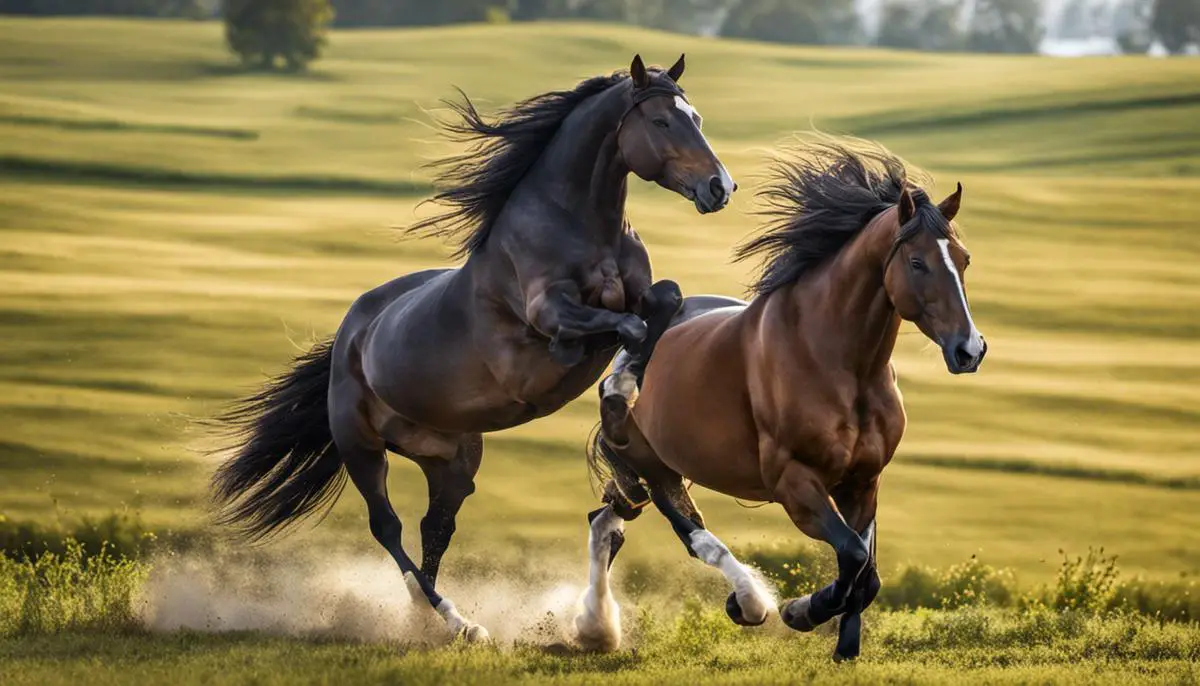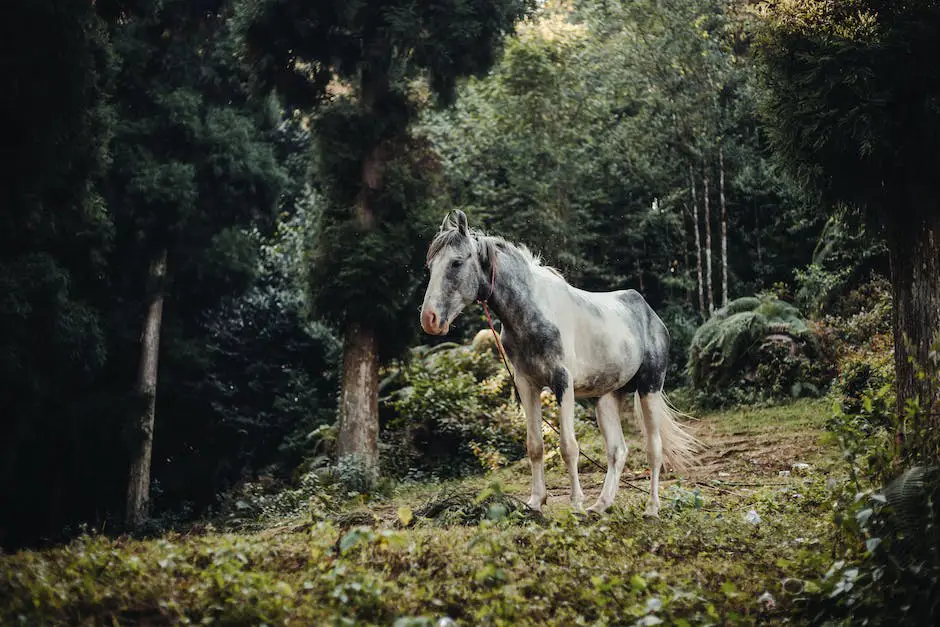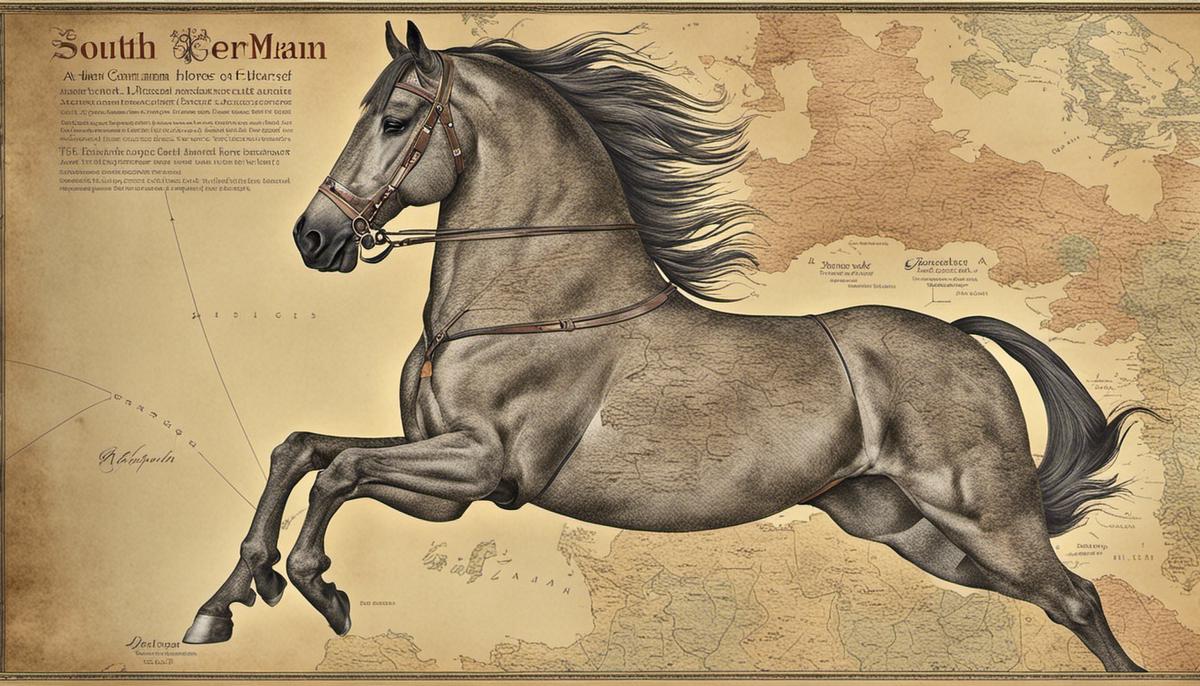Steeped in rich historic tradition and characterized by an array of distinctive attributes, South German horse breeds form an integral part of Germany’s equine diversity. Not only do they offer a glimpse into the fascinating dynamics of equine evolution and selective breeding practices, they also exhibit traits that make them invaluable assets in many areas. From the thrilling spheres of equestrian sport and horseback tourism to the nurturing realm of therapeutic riding programs, these breeds command noteworthy presence. Furthermore, they play a crucial role in the conservation of cultural heritage and biodiversity. As you venture into this comprehensive exploration of South German horse breeds, prepare to discover a unique intersection of history, biology, sport, and culture, all woven together through the lives of these extraordinary equines.
Table of Contents (Horspedia)
History and Origins of South German Horse Breeds
Origins of South German Horse Breeds
The original South German horse breeds are believed to have originated during the Middle Ages, when conquest and trade brought a variety of different horse breeds into the region. Equines from Asia, Africa, and other parts of Europe all contributed to the development of these unique breeds. Despite the variety of influences, the cold, mountainous environment of Southern Germany played a significant role in shaping these breeds, leading to hardy, durable horses well-equipped for harsh winters and rugged terrain.
Influence of the Holy Roman Empire on South German Horse Breeds
One of the major influences on South German horse breeds were the knights of the Holy Roman Empire, which controlled vast swaths of Europe, including most of modern Germany, from the 9th to the 19th centuries. These knights bred sturdy, powerful horses capable of carrying a fully armored man into battle, which significantly impacted the traits and characteristics of the South German horse breeds.
Breeds of South German Horses: The Black Forest Horse and Bavarian Warmblood
There are several noteworthy breeds that originated from South Germany, showcasing the region’s varied equine history. One such breed is the Black Forest Horse, also known as the “Schwarzwälder Kaltblut”, widely recognized for its chestnut coat and flaxen mane. The breed was developed in the early 15th century and was renowned for its strength, stamina, and versatility, making it ideal for farming and forestry work.
The Bavarian Warmblood is another prominent South German breed that was developed from local farm horses crossed with Thoroughbreds and Oriental breeds. Introduced in the late 18th century, the Bavarian Warmblood quickly gained popularity for its speed, agility, and temperament, cementing its status in dressage and show jumping arenas across the world.
Selective Breeding and Environmental Conditions
South German horse breeds are also a product of selective breeding, which allowed for the emphasis and preservation of desirable traits. These traits often revolved around durability, endurance, and versatility, allowing the horses to excel both in labor and in battlefield role.
Environmental conditions also played a significant role in shaping the South German horse breeds. With harsh winters and rugged terrain, the breeds needed to not only withstand the challenging conditions of the South German Alps, but also be capable of working and navigating such an environment. This need for hardiness and adaptability resulted in breeds with broad chests, strong limbs, and an impressive capacity for endurance.
Preserving, Adapting, and Thriving in Modern Times
In the face of relentless technological advances, South German horse breeds have persistently proved their enduring significance in Germany and beyond. Their unique characteristics, cultivated over many generations, and historical pedigree are deeply cherished. Therefore, numerous organizations and breeding programs continue their tireless efforts to preserve these breeds’ unmatched heritage. In spite of the extensive mechanization, it’s remarkable to witness the resilience of these robust breeds as they continue to contribute enormously in fields like agriculture, riding, and equestrian sports.

Characteristics and Traits of South German Horse Breeds
Recognizing South German Horse Breeds: Distinct Features and Characteristics
The striking physical attributes of South German horse breeds, particularly the Black Forest Horse and the South German Coldblood, are truly unparalleled. These breeds are best recognized by their compelling muscular build. This is most evident in the Black Forest Horse that boasts an impressive weight of over 600kg and a height ranging between 14.2 and 15.3 hands. This horse’s stout yet regal structure is elegantly accentuated by a contrasting flaxen mane and tail.
Contrarily, standing tall between 15 to 16 hands and a heavier build, the South German Coldblood holds its own. This breed generally exhibits chestnut or roan hues, highlighting their gorgeous, often dappled coats.
Regarding temperament
South German horse breeds are generally known for their calm and even-tempered demeanors. Both the Black Forest and South German Coldblood boasts a friendly, docile, and hard-working temperament – qualities highly prized among horse lovers. These gentle giants are known for being willing workers and are easily trained, making them excellent choices for a variety of equestrian tasks.
Role and Use in Equestrian Practices
The physical attributes and temperaments of South German horse breeds make them exceptional performers in various roles. The Black Forest horse, specifically, is revered for its strength and stamina, making it an excellent draft horse. Yet its versatility shines through as it is also commonly used in agriculture, forestry, and hauling. In more recent years, the breed’s gentle disposition and striking appearance have also found them a place in riding schools and leisure riding.
The South German Coldblood shares the draft horse qualities of the Black Forest horse but is more commonly used in agricultural tasks due to its great power. Despite their inherent strength, they are also appreciated for their docile nature and can often be seen in carriage driving, recreational riding, and even therapeutic riding programs because of their steady and reliable behavior.
Performance Capabilities of South German Horse Breeds
The performance capabilities of these breeds are nothing short of impressive. The Black Forest Horse is known as the ‘little powerhouse,’ a testament to its incredible pulling power considering its relatively smaller size. Furthermore, its agile and precise movements make it a suitable choice for various equestrian sports, including dressage.
Similarly, the South German Coldblood performs well in heavy draft work because of its strong muscle build and inherent resilience. But its capabilities extend beyond this; its calm demeanor and steady pace make it a popular choice in therapeutic riding and different forms of leisure riding.
Overview
Characterized by their admirable strength, versatility, and friendly demeanor, South German horse breeds have become favorites among horse enthusiasts. Their powerful physique, in tandem with their approachable temperament, has gained them respect in the equestrian world, making them well-suited for both professional equestrian tasks and leisurely pursuits.

Popular South German Horse Breeds & Their Uses
The Distinction and Variety of South German Horse Breeds
The region of South Germany, comprising states such as Bavaria and Baden-Wurttemberg, is famous for nurturing a number of robust and practical horse breeds. Renowned for their size, physical prowess, durability, and disposition, these horse breeds are the perfect fit for diverse roles, from workhorses and sports horses to those meant for pleasure riding.
The Bavarian Warmblood: A Versatile Performer
The Bavarian Warmblood originated in the Bavarian region of South Germany. Known for its athleticism and excellent temperament, this horse breed is often used in a variety of equestrian activities including dressage, show jumping, and endurance riding. Bred to handle a variety of terrains, the Bavarian Warmblood also excels in cross-country events. These horses are ideal for both beginner and experienced riders due to their calm demeanor and versatility in different disciplines.
The South German Coldblood: A Workhorse Par Excellence
Unlike the Bavarian Warmblood, the South German Coldblood is a heavy draft horse breed that originated in Bavaria and Wuerttemberg. They have been used predominantly for heavy lifting and pulling tasks, such as farming, forestry and in some breweries. This horse breed is characterized by its strength, endurance, and ability to work in challenging conditions. Although they are not as plentiful as they once were due to modern machinery, they still perform important duties in some rural areas.
The Black Forest Horse: A Unique Combination of Strength and Beauty
The Black Forest Horse, also known as the Schwarzwälder Kaltblut, hails from Baden-Wurttemberg. Known for its small and sturdy build, this horse breed is very resilient and ideal for heavy work. Despite its robust capabilities, it has a very gentle temperament that makes it an excellent choice for use in therapeutic riding programs. The breed’s distinctly dark coloring also makes it a popular choice for horseback tourism, providing an unforgettable aesthetic experience for trail riders.
The Hanoverian: A Distinguished Sports Horse
The Hanoverian is another South German breed, although it is not strictly confined to that region as it is popular across Germany. This breed is considered one of the most successful show horses globally. Hanoverians routinely top the leaderboard in dressage, show-jumping, and three-day events, making them a favored breed of competitive equestrian athletes.
South German Horse Breeds: The Pillars of Tradition
In South Germany, horse breeds go beyond mere roles in sports, tourism, and farming. Regarded as vital components of the region’s cultural heritage, these equines epitomize the agrarian roots and historical connections of South Germany. To ensure these breeds survive and thrive amidst the rapid urbanization and modernization, ongoing efforts are dedicated towards protecting and stabilizing their population.

Conservation and Challenges Facing South German Horse Breeds
Advocacy and Commitment to Sustain South German Horse Breeds
Faced with the task of preserving these iconic horse breeds, a range of organizations – from independent breeders to professional equine scientists – rise up to the challenge. With the Black Forest Horse and the Swabian-Hall Horse among the South German horse breeds showcasing distinctive traits suitable for agriculture, transport, equestrian sport, and tourism, it has become more critical than ever to ensure their continued existence. This is attained through rigorous advocacy of responsible breeding practices and the drive for enhanced genetic diversity. Therefore, comprehensive conservation programs and breeding initiatives are geared towards propagating healthful and robust specimens of these invaluable breeds.
Challenges to South German Horse Breeds Preservation
Undeniably, maintaining the population and health of South German horses presents a formidable challenge. Urbanization is one of the main culprits, taking over the traditional rural landscapes where these breeds have roamed and worked for centuries. As cities and infrastructures expand, the natural habitats of these horses shrink, limiting the space for them to breed, graze, and even just exist.
Another challenge these horse breeds face is climate change. Shifts in temperature patterns and the resulting changes in vegetation can significantly impact the health and survival of these species. Horses, particularly those in specific breeds like the South German horses, may find it difficult to adapt to these changes, leading to health problems and lower reproduction rates.
Also, maintaining genetic diversity is a crucial issue. Breeds become vulnerable to disease and physical problems when the gene pool becomes too narrow due to overbreeding within a small population or selection for specific traits. To prevent this from compromising the vitality and uniqueness of South German horse breeds, conservational breeding that values genetic diversity is necessary.
Implication of Issues on the Survival and Future of South German Horse Breeds
Urbanization, climate change, and a dwindling gene pool threaten not only the vitality of these breeds but also their very survival. If these issues are unaddressed, we risk losing not just distinct horse breeds, but the heritage and history they represent.
Equestrian enthusiasts, breeders, and conservationists face the task of balancing the preservation of these traditional horse breeds with the societal and environmental changes of modern living. This includes educating the public about these breeds, supporting sustainable urban development that considers equine habitats, and promoting greater genetic diversity within these breeds. They would also benefit from closer work with scientists and policymakers in creating guidelines and legislation that protect these breeds and their habitats.

A nuanced understanding of South German horse breeds provides an enriching perspective on not only Germany’s horse culture, but also the broader significance of conserving biodiversity. The various risks and challenges these breeds face today act as critical reminders of the fragile ties that bind the fate of these animals with the state of our environment and the advancement of our societies. Their resilience symbolizes not just the strength inherent in their breed, but also the dedication of those who strive to safeguard their existence. The future of these administrations, as well as the breeds they champion, will continue to rely on shared commitments to conservation, education, and sustainable practices in order to ensure that these majestic horses remain a vibrant and beneficial part of our world for generations to come.

